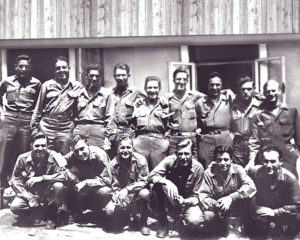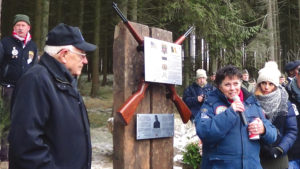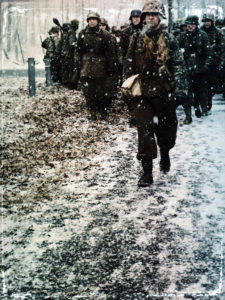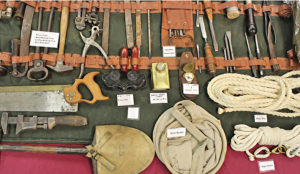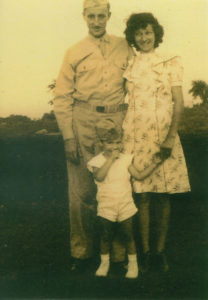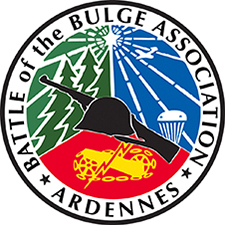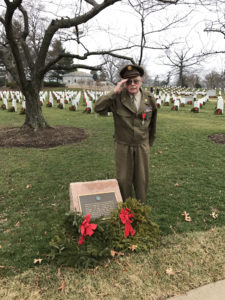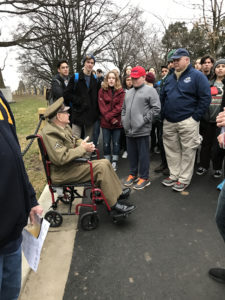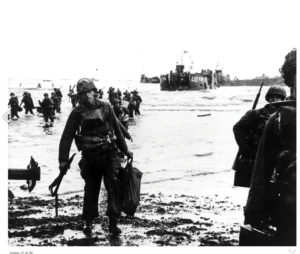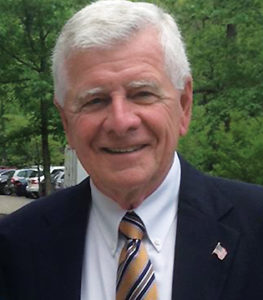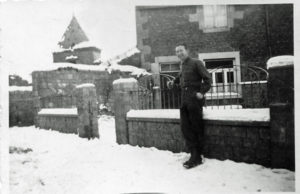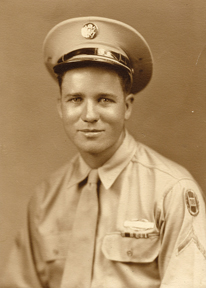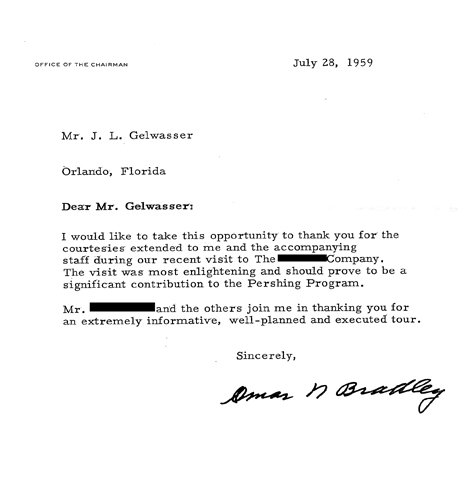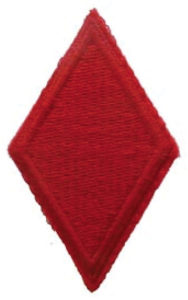
High Praise from General Patton
A month before his tragic death in an automobile accident, General George S. Patton sent the following letter to the Officers and men of the Fifth Infantry Division on their return home. At the time, he no longer commanded the Third Army, but was postwar commander of the Fifteenth Army and all US Forces in Europe.
HEADQUARTERS FIFTEENTH U. S. ARMY
Office of the Commanding General
A P O 408
17 November 1945
To the Officers and men of the Fifth Infantry Division:
Nothing I can say can add to the glory which you have achieved. Throughout the whole advance across France you spearheaded the attack of your Corps. You crossed so many rivers that I am persuaded many of you have webbed feet and I know that all of you have dauntless spirit. To my mind history does not record incidents of greater valor than your assault crossings of the Sauer and the Rhine.
Concerning the former operation, I showed the scene of your glorious exploits to a civilian for whom I have the highest esteem. After looking at it for some time he said, “I did not believe there was enough courage in the world to achieve such a victory.” Knowing the Fifth Infantry Division, I was sure you would achieve it and you did. Now that peace has been re-established I am sure all of you will continue through the remainder of your lives to stand for those great qualities of America which in war you so magnificently demonstrated.
With affectionate regards and sincere congratulations, I am as ever;
Your devoted commander,
General G. S. Patton, Jr.
Crossing of the Sauer,
by the Fifth Infantry division
Roland Gaul is the founder and recently retired Director/Curator of Luxembourg’s National Museum of Military History in Diekirch on the River Sauer. He is a professional military historian and Battle of the Bulge guide and has written an expert battlefield study of the 5th ‘Red Diamond’ Infantry Division’s Sauer River Crossing which so impressed General Patton. So he was just the right person to explain it to me. Here is a summary of our discussion. If you visit the National Museum, you can see a dramatic recreation of the “Sauer River Crossing” in the form of a life-size diorama. (Note: A 5th ‘Red Diamond’ Infantry Division tour is being planned for 2018. See “Tours,” p. 13)
On December 16, 1944, three German armies invaded the Belgian and Luxembourg Ardennes and soon created a 70 mile westward ‘Bulge’ in the Allied front. The Battle of the Bulge had begun.
But Third Army Commander, General George Patton, had already anticipated the German attack and was able to react fast. On December 20, in a technically difficult and very daring maneuver, Gen Patton swung six Third Army divisions northwards from France to attack the southern shoulder of the German Bulge. He sent three divisions to liberate and secure Bastogne in Belgium from the German Fifth Panzer Army, and three divisions, one of which was 5th Inf Div, to contain and push back the German Seventh Army in Luxembourg. At that time, 5th Inf Div was on the French-German border in the middle of attacking Saarlautern in Saarland, about 50 miles southeast of Luxembourg. The 5th Inf Div immediately disengaged and within 24 hours was in Luxembourg.
After initial tactical successes and territorial gains in southeastern Luxembourg December 16-22, German Seventh Army units were stopped in their further advance by 5th “Red Diamond” Inf Div and 4th “Ivy Leaves” Inf Div, and had to retreat to the northern bank of the River Sauer (or Sûre), which flows eastwards through central Luxembourg. 5th Inf Div and 4th Inf Div then formed an unbroken line of defense along the southern bank of the Sauer. Its pleasant river valley among forested hills is a formidable natural barrier along which the German-American frontline and southern shoulder of the Bulge was stabilized in late December 1944. Winter 1944-45 was the coldest in 100 years, and the temperature dropped to minus 15 degrees Celsius (minus 5 Fahrenheit) during the day, and even to minus 22 Celsius (minus 7.6 Fahrenheit) at night. There was thick snow everywhere.
But once Bastogne (Belgium) had been liberated and secured, it was time for Third Army to break through the southern shoulder of the Bulge in Luxembourg. Since the 5th Inf Div was considered the expert river crossing unit, it was tasked with crossing the River Sauer, recapturing towns in the river valley such as Diekirch and Bettendorf, retaking the heights on the northern side and cutting the Germans off from reaching the Our River (the Our is a tributary of the Sauer) and thus the safety of the Siegfried Line and Germany.
The Sauer River crossing was a nighttime action by 5th Inf Div’s three infantry regiments, 2nd, 10th and 11th, jumping off at 0300 on January 18, 1945, without any artillery preparation (not to take away the element of surprise). They were augmented with specialized battalions, namely, Engineers for bridging and ferrying, Field Artillery, Medics, Tanks and Tank Destroyers and Chemical Mortars. 2nd Regt’s crossing sector was Ingeldorf – Diekirch. 10th Regt’s crossing sector was Diekirch – Bettendorf. 11th Regt was held in reserve on two-hour call.
By nightfall on January 18, the 5th Inf Div’s bridgehead was 1.5 kms (about 1 mile) deep with a front of 6.5 kms (about 4 miles). Each regiment had successfully crossed all its battalions. The Germans had been caught by surprise. Despite enemy fire and the terrible winter weather with its snow and mud, the Engineers had been able to throw one treadway bridge, two Class 40 bridges, two assault boat bridges and two foot bridges across the river, enabling Sherman tanks and M-10 tank destroyers to cross the icy waters of the Sauer.
By January 28, all the assigned regimental objectives had been achieved. After a few days of much needed rest, 5th Inf Div changed sectors in early February to take part in Patton’s Third Army strike into Germany on an 8 km (about 5 miles) front northwest of Echternach, once again across the Sauer River, but this time its lower reaches, directly facing Germany. This was the beginning of the official “Rhineland Campaign” on February 7, 1945, and the invasion of Germany.
—Submitted by Patrick Hinchy, Military Historian and Tour Director
Click here for information about an upcoming 5 INFD Tour and other planned tours of Bulge sites.

